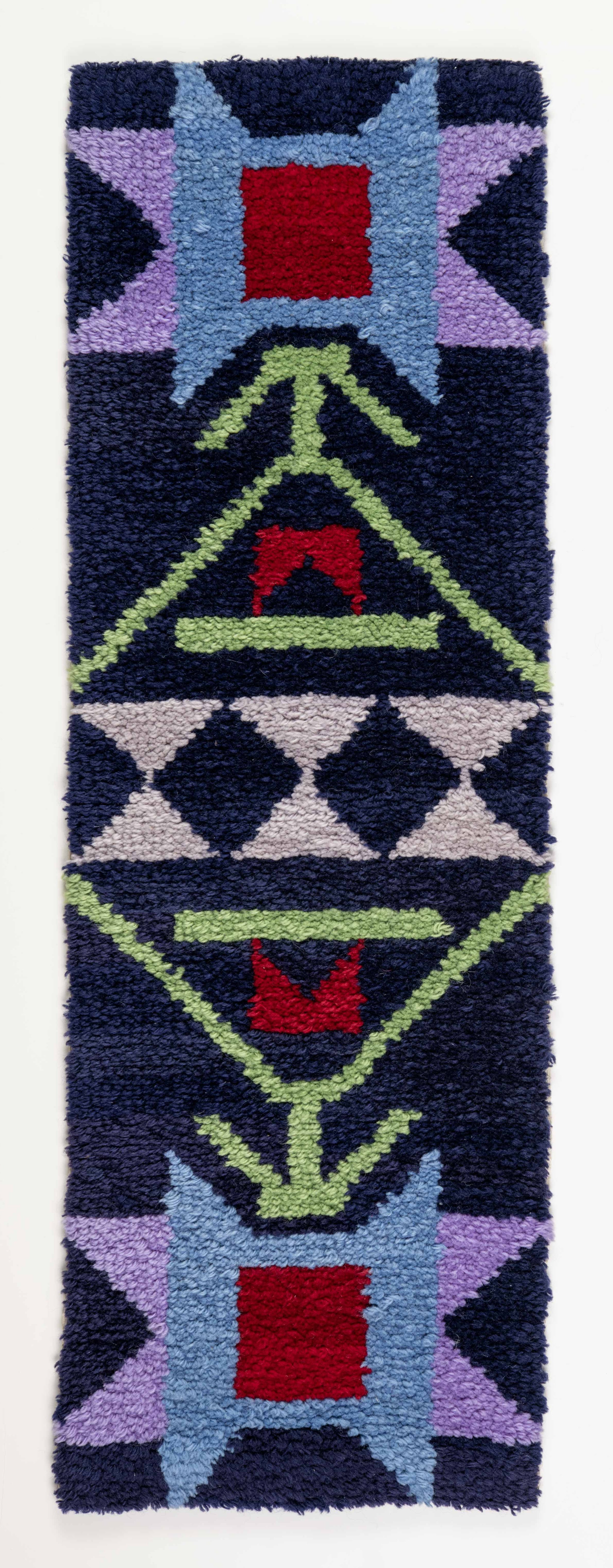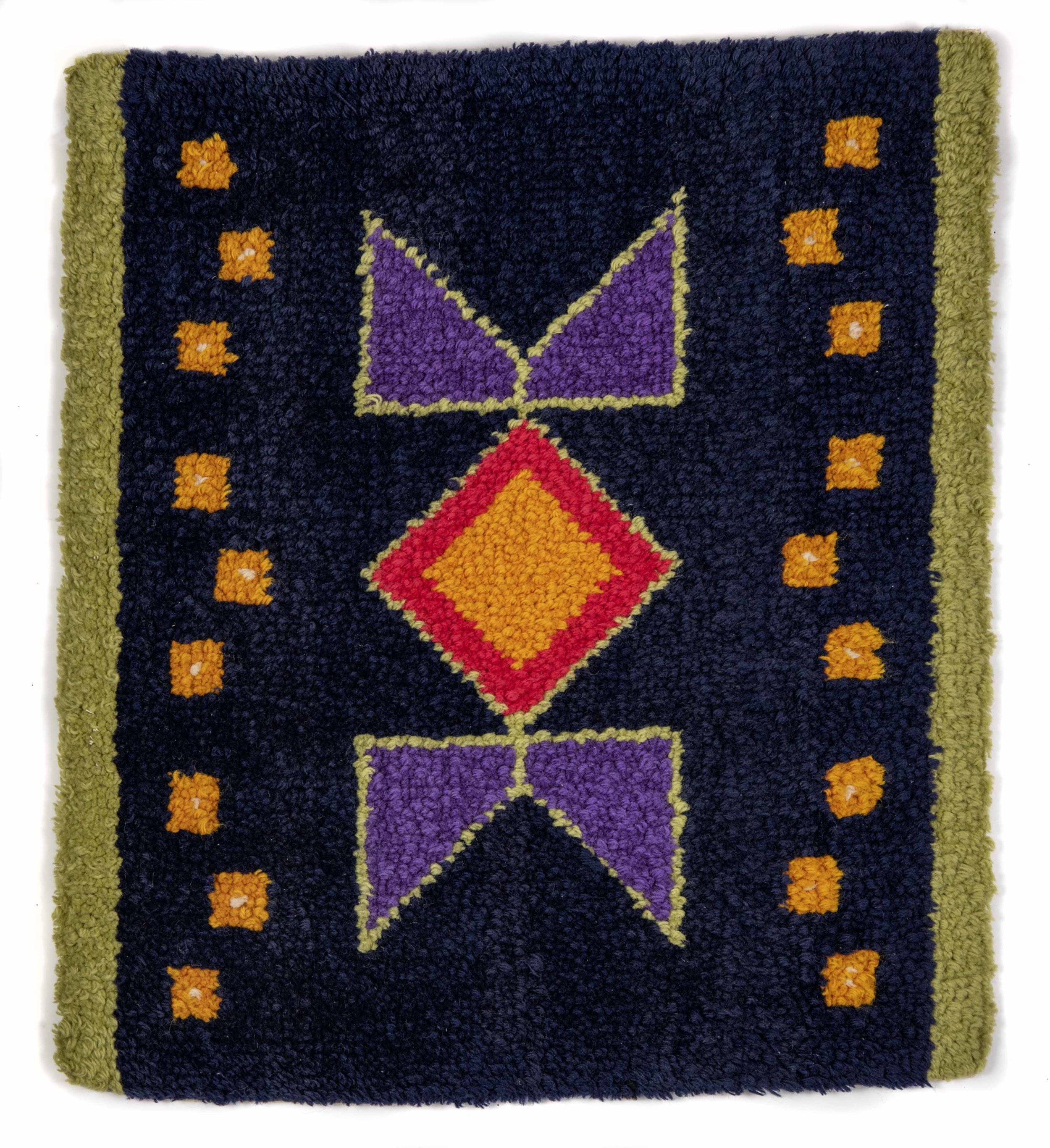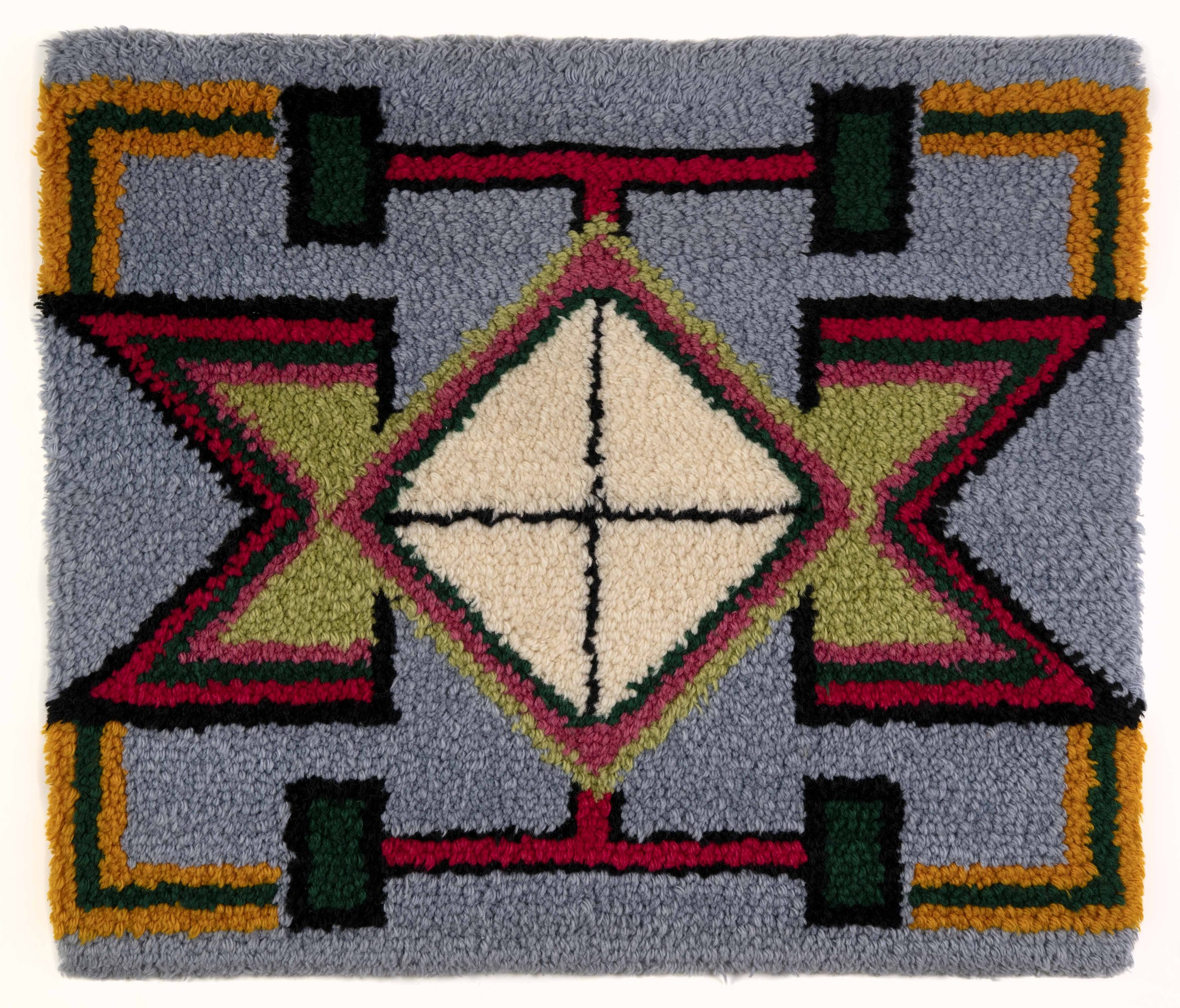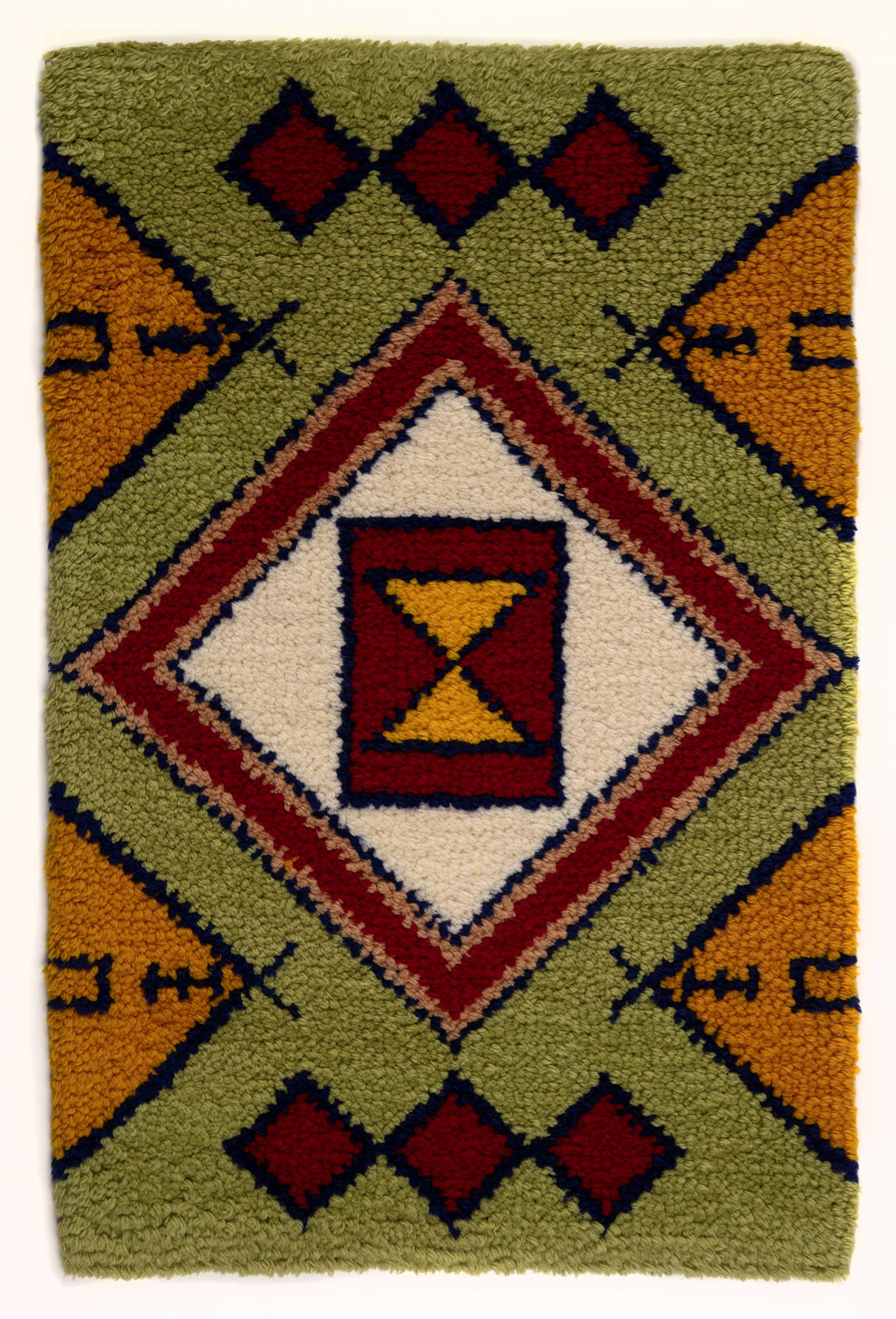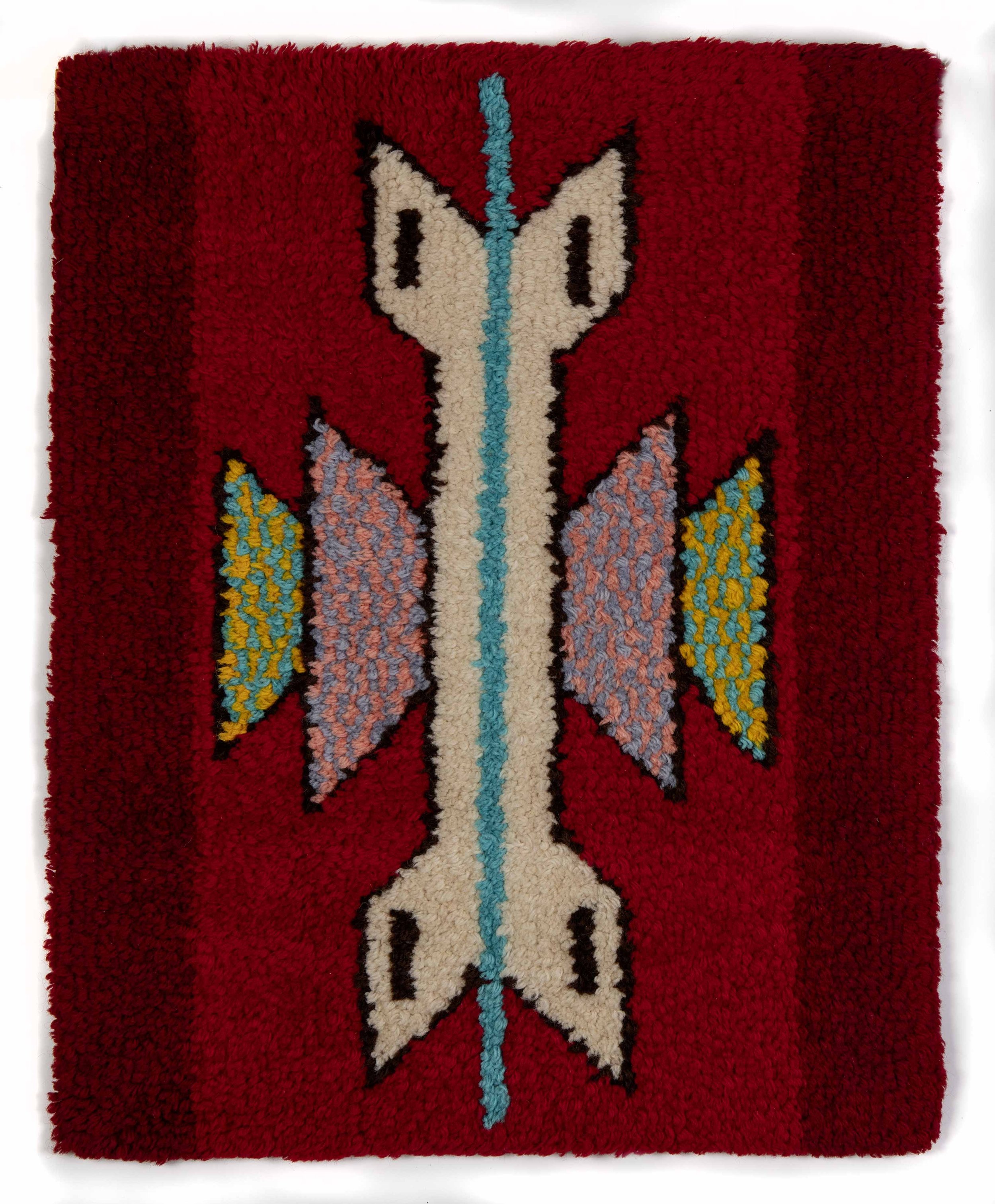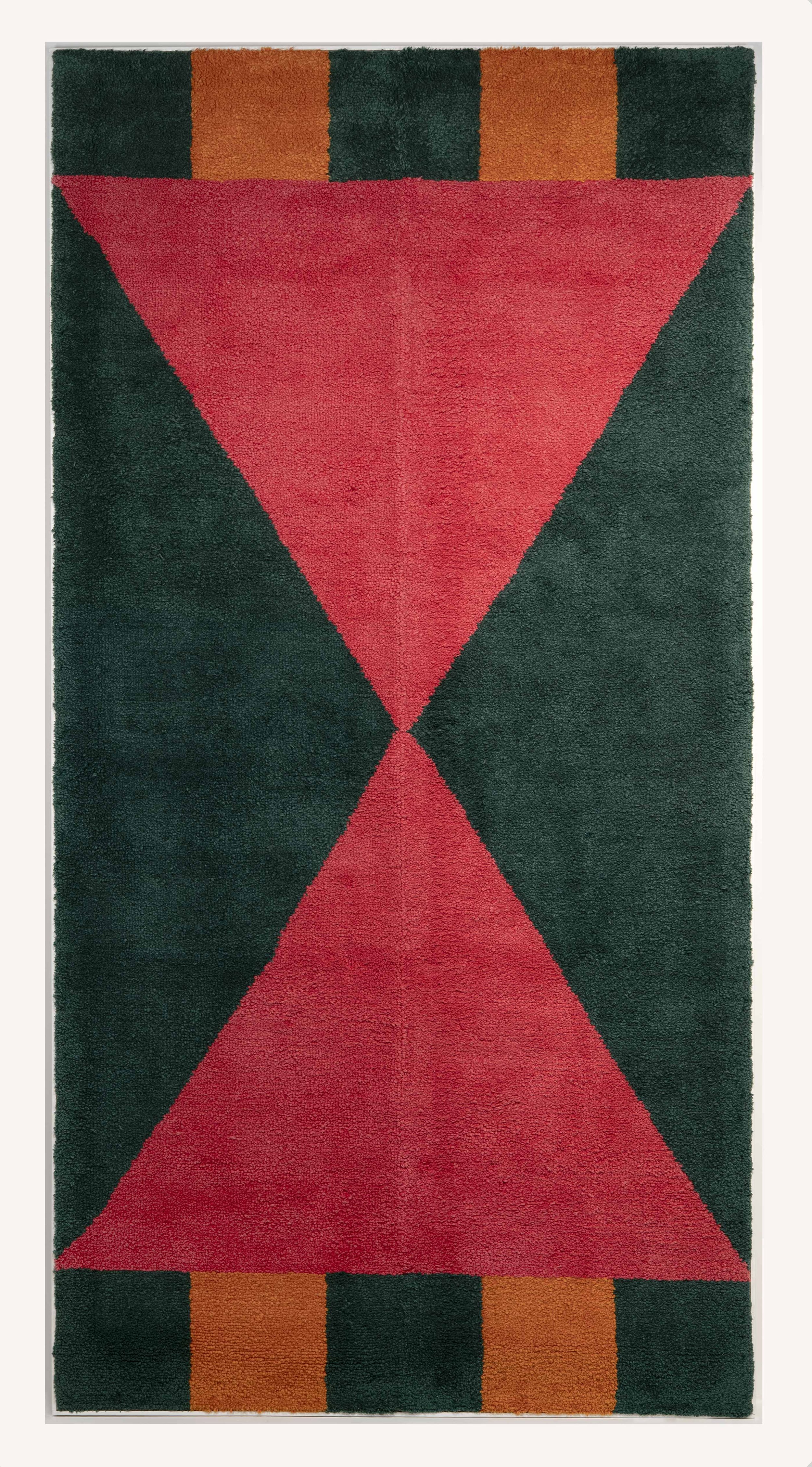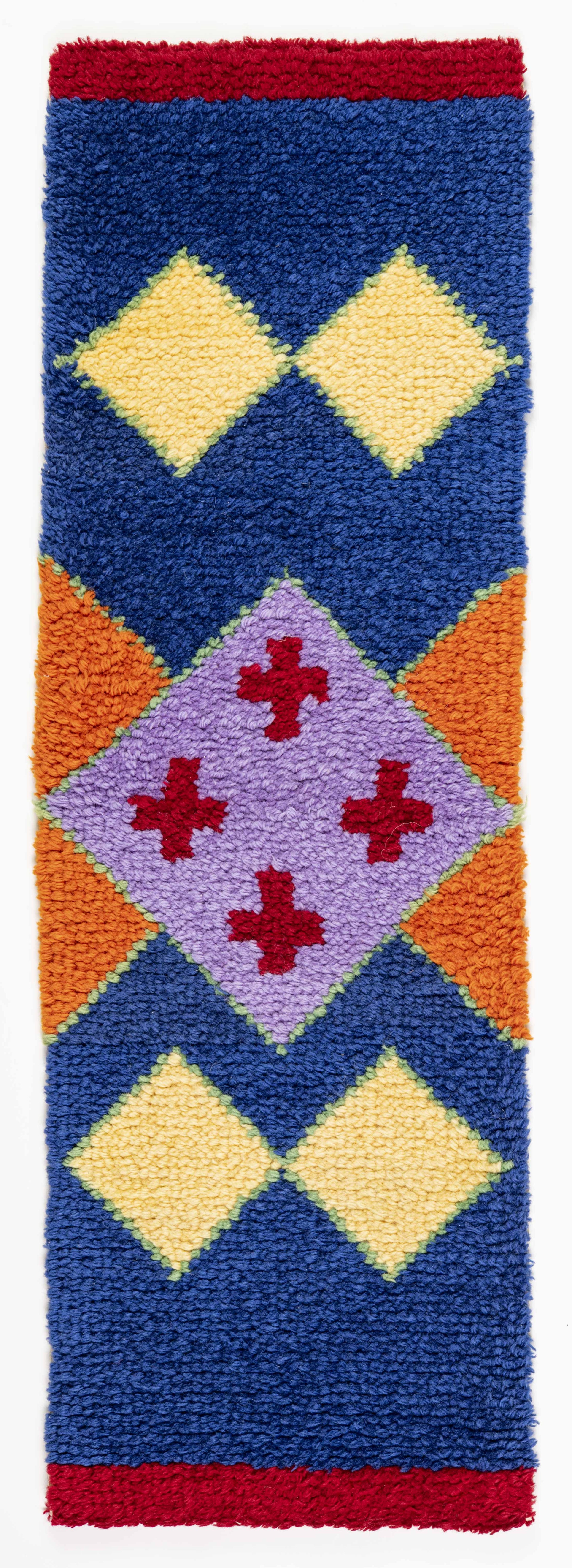|||||
Ta-hah-sheena: Hooked Rugs from Standing Buffalo First Nation
The hooked rugs on this Page were made by members of the Sioux Handcraft Co-operative, a vibrant group of women active from 1967 to 1972 on Standing Buffalo First Nation, located in the Qu’Appelle Valley of southern Saskatchewan.
Conceived as an economic development venture—similar to government organized “Eskimo Art” co-operatives in the north—the project built on the experience and knowledge of Indigenous women of the Qu’Appelle Valley who for decades had made hooked and braided rugs. An initial two-week rug hooking workshop was organized by Martha Tawiyaka and Lorna Bell Ferguson with funding from the Saskatchewan Arts Board (now SK Arts). Elders played an essential role as design consultants for the group, including Marina Goodfeather (b. 1901), Jessie Goodwill (b. 1896), Mary Lasuisse (b. 1890), Martha Tawiyaka (b. c. 1877) and Lucy Yuzicappi (b. 1891), while Ferguson, the wife of a teacher on Standing Buffalo, served as the co-operative’s spokesperson and marketing consultant. Grandmothers, aunties, mothers, daughters, sisters and in-laws—most of the women were related—worked together to make wool, latch hooked rugs which they called Ta-hah-sheena, after a type of traditional Dakota ornamented robe. Designs were based on those found on the robes, as well as on painted parfleche bags, and employed a language of basic shapes, such as crosses (stars) and triangles (tipis or hills). The meanings of the designs, often passed down in families, could shift significantly according to the combination of shapes and their context. Creativity and innovation were encouraged.
By 1969, the group had produced over 182 unique designs and eventually the co-operative had over 45 members. Ferguson, who proved an able promoter, obtained extensive media coverage for the co-operative, including a National Film Board documentary, Standing Buffalo (1968). Exhibitions were held in government buildings, art galleries, the prestigious New York Gift Show, Saskatchewan House (London, UK), Musée de l’homme (Paris, France), and Expo ’70 (Osaka, Japan). Their largest commission, represented here by Marge Yuzicappi’s Tapestry (Ta-hah-sheena), came from the University of Saskatchewan, Regina Campus (now University of Regina), with designs by three members selected: Yuzicappi, Martha Tawiyaka, and Bernice Runns. Their monumental rugs were hung in the common area of the Dr. John Archer Library, a building whose high modernist arches were designed by Minoru Yamasaki, architect of the World Trade Center in New York. By 1972, the long hours, low pay, and high cost of materials, combined with changing circumstances among the group’s leadership, led to the demise of the co-operative. In the following years, Florence Ryder, who learned rug hooking from her mother, Elizabeth Ryder, carried on the practice into the 1980s and 1990s, producing works which reflect the aesthetic legacy of the collective.
[Text adapted from Sherry Farrell Racette, “Marginalized Moderns: Co-operatives and Indigenous Textile Arts in Saskatchewan, 1960–1972,” 2022.]
01.
Co-operative members Louise Bear (left), Marina Goodfeather (center) and Louise Bear (right), c. 1967. Source: Suzanne Probe, TA-HAH-SHEENA: Sioux Rugs from Standing Buffalo Reserve (Regina: Dunlop Art Gallery, 1988), 6. Photo: Graphic Photo Stuido, Fort Qu’Appelle, SK.
02.
A “Sioux Handcraft Industry” business card. Source: SK Arts.

